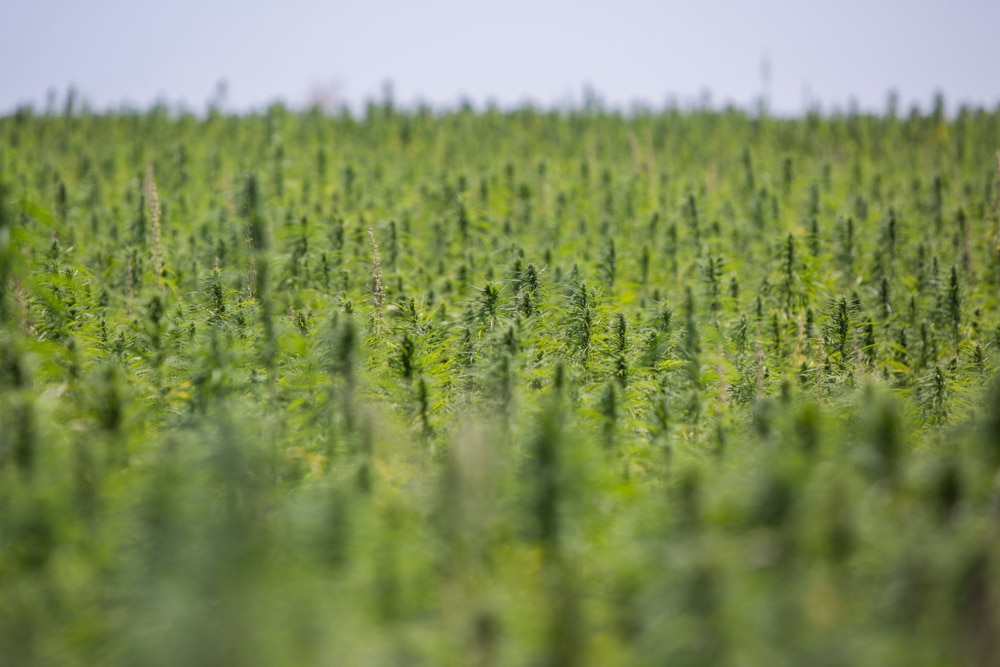
The industrial hemp market will reach $18.1 billion in five years
Information gathered in Research and Markets’ Global Hemp Market by Type report, which analyzes the numerous uses of hemp as textile, food, building material and more. The report predicts that the industry will register a compound annual growth rate (CAGR) of 21.6% over the next five years, suggesting that this percentage will increase as many other countries have legalized industrial hemp or are doing so in the near future will.
The report also cites examples of hemp successes seen this year. In terms of application, hemp flour has recently been covered as an alternative method of feeding livestock. “Hemp seeds and hemp cake could be used as feed materials for all animal species, with species-specific differences in dietary intake rates, according to the scientific opinion of the Panel on Additives and Products or Substances in Animal Nutrition of the European Food Safety Authority (EFSA).” in a press release from Research and Markets. “Hemp oil can be used as a rich source of essential fatty acids as a supplement in animal feed, while hemp seed and hemp seed cake can be used as a source of fat and protein in animal nutrition.”
The report also explains that hemp bast fibers, which are composed of cellulose, hemicellulose, lignin and pectin, also offer many advantages for use in textiles. “The advantages of bast fibers include lower product weight, lower energy consumption and a smaller ecological footprint. Bast fibers can be spun and woven and are therefore widely used in the textile industry,” says Research and Markets. “Moreover, bast fibers are much stronger than cotton and don’t mold. Hemp bast fibers have exceptional properties such as strength, durability, and antibacterial and antifungal properties.”
In addition to increasing legalization around the world, the report also cites the increasing use of hemp seeds and oil in foods and an “increasing incidence of chronic diseases” as two key drivers contributing to the rise of hemp. However, the ongoing stigma against hemp and cannabis and some countries’ restrictions on industrial hemp continue to hamper its growth.
Other hemp-based reports have also come out recently, projecting similar growth for the hemp industry. A report from the United Nations Conference on Trade and Development (UNCTAD) entitled “Commodities at a Glance: Special Edition on Industrial Hemp” states that the global hemp market will reach $18.6 billion by 2027. According to UNCTAD economist and report author Marco Fugazza, hemp offers a lot of potential for both established and developing countries. “The growing hemp market presents significant economic opportunities that all countries can benefit from,” said Fugazza. “As a renewable product, the opportunities are sustainable. This is extremely important as countries try to boost their economies while protecting the environment.”
The UNCTAD report recommends that “governments need to clarify its legal status as a non-intoxicating agent.” Once that is done, countries can begin to explore the many benefits that hemp plants offer. “Due to its versatility and functional properties, the industrial hemp market holds tremendous potential in agriculture, textiles, recycling, automotive, furniture, food and beverage, paper, building materials and personal care sectors,” states the UNCTAD report. Additionally, hemp can be an effective part of crop rotation, which can help maximize land use and contribute to higher incomes for farmers.
Hemp for animals and livestock continues to be a contentious issue. While hemp as animal feed may reduce stress in cattle, a recent research study showed that THC was found in the systems of cows that ate hemp feed. In September, the state of Idaho banned the sale of CBD supplements for pets because “safe levels of hemp and hemp-derived products in pet food have not yet been established under federal or state law,” the state Department of Agriculture said.

Post a comment: